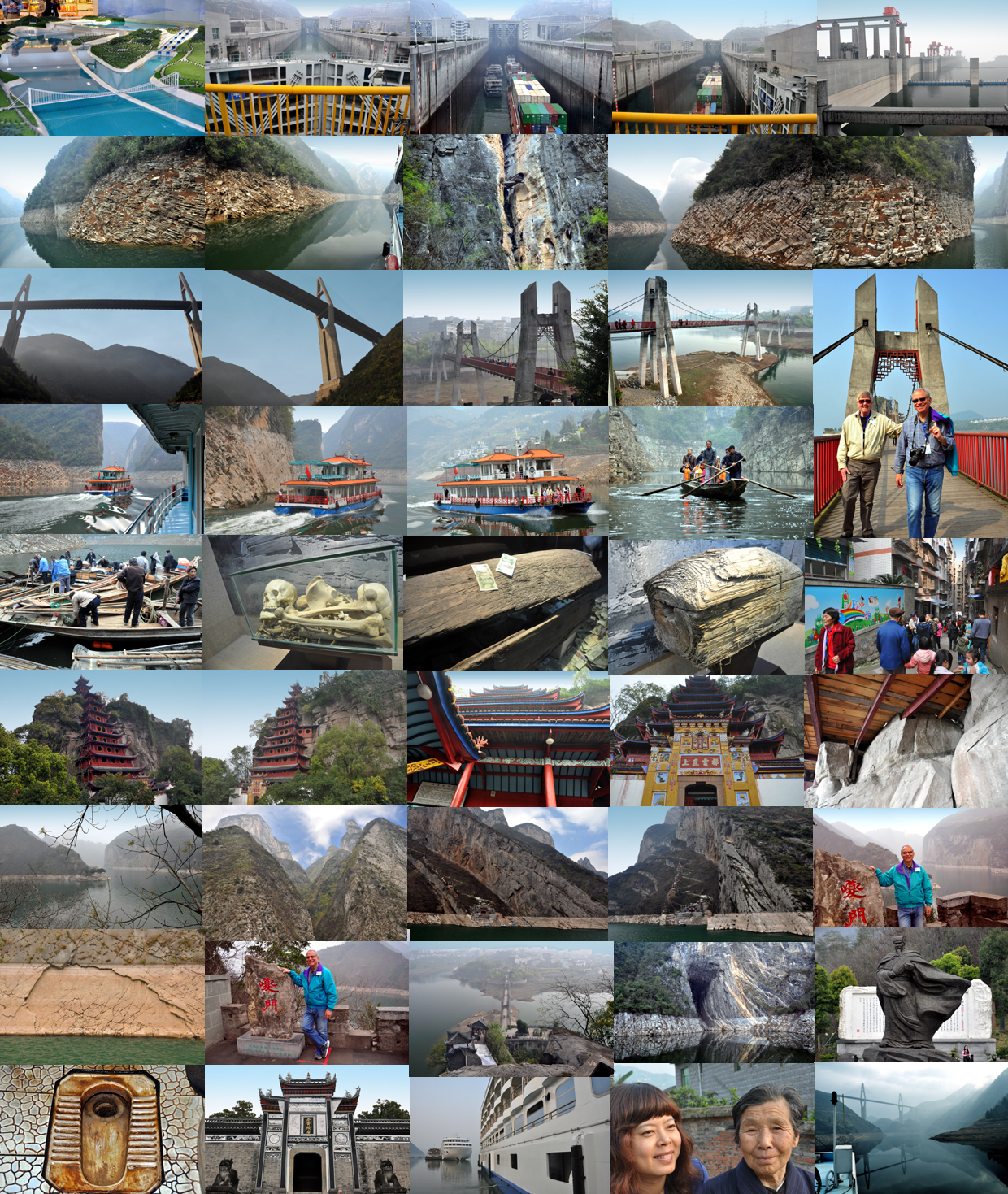

|
Ancient people dug small square holes on cliffs adjacent to a river and inserted timber piles into them and then placed the coffins on the piles. This type of cliff burial is mainly found in the south of Sichuan and the west of Hunan Provence of China.
The cliff coffin is placed on timber piles which are inserted into the natural cliffs and caves or rock fractures and found in the Three Gorges area of the Yangtze River.
Cliff Edge: Some narrow protruding edges are often formed naturally on the steep cliffs at seaside. These natural platforms can be used as excellent locations for placing coffins. This type of cliff-burial is often seen in Taiwan and on the islands of Southeast Asia.
Horizontally-dug graves: The ancient people dug a rectangular shrine on the cliff adjacent to the river, which can only accommodate a coffin of about 2 meters long and 1/2 meter high and side - a side of which is exposed outward. This type of arrangement is found in the south of Sichuan Province and the Three Gorges area of the Yangtze River.
Square Cave: The ancient people excavated a 1.5 meter square caves adjacent to the river for coffin placement and can be found in Sichuan Province, east of Chongqing Municipality and west of Hunan Province.
Suspension Bridge: (san pan) Hu Rong highway from Shanghai to Chen Du
The world's largest generator of electric power from a renewable source
PURPOSE:
1. Reduce Floods
2. Generate Electricity
3. Improve Navigation
The great floods of 1931, 1935 and 1998 killed 290,000 people. Over 100 shipwrecks have been recorded.
DAM FACTS:
* 610 feet high.
* 7,661 feet long.
* 131 feet thick at the top and 337 feet thick at the base.
* The most expensive hydroelectric project in history.
* The $28 Billion dollar dam project paid for itself in ten years.
* The cost of the dam is the equivalent of 14 space shuttle missions.
* The dam can be seen from outer space.
* 150 people died during its construction.
* 40,000 worked on the project from 1992 to 2008.
* 1.4 million people had to be relocated.
* 13 cities were submerged along with 140 towns and 4,500 villages and 1,300 archaeological sites.
Enough concrete and steel were used to build the Eiffel Tower 60 times. The dam can withstand an earthquake of 7.0 on the Richter Scale.
The dam's 34 generators can produce 22.5 Gigawatts of electricity equivalent to 25 million tons of crude oil.
The "Francis" (adjustable) turbines are 32 feet in diameter and turn at 75 RPM.
The dam also includes five locks with 850 ton hinged gates raising/lowering ocean-going vessels 113 meters over a 4-hour period.
Qutang, Wu & Xiling Gorge
The most spectacular, dramatic peaks; (wonders of nature), along the Yangtze River are the Three Gorges.
Upstream is the five mile long "Qutang Gorge" said to be the shortest, narrowest, most impressive with its huge vertiginous slabs of rock...so impressive...its depicted on the 10 Yuen note pictured above.
Mid-stream is the "Wu Gorge" or "Witches Gorge." This gorge is 25 miles long and is the greenest of all three.
Downstream is the "Xiling Gorge. It runs 50 miles making it the longest of the three and is found in the Hubei Province.
Before entering the Three Gorges downstream is the "Lesser Three Gorges." We sailed on the "Goddess Stream" near Wushan, just recently opened for tourism.